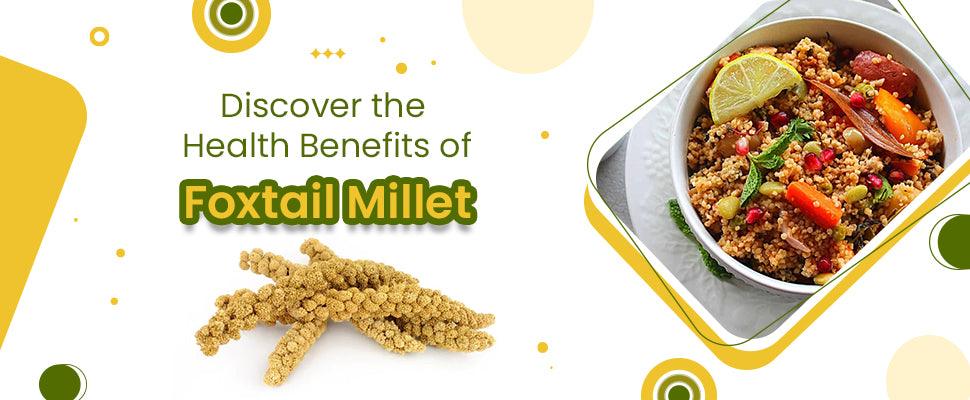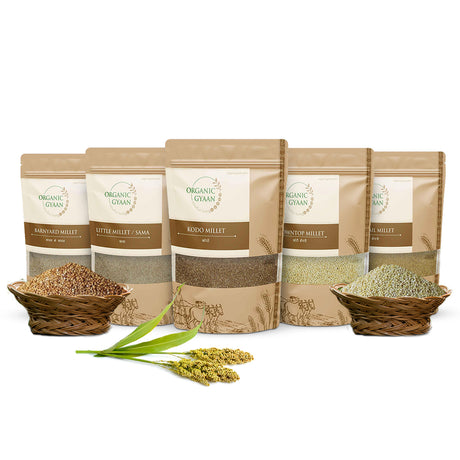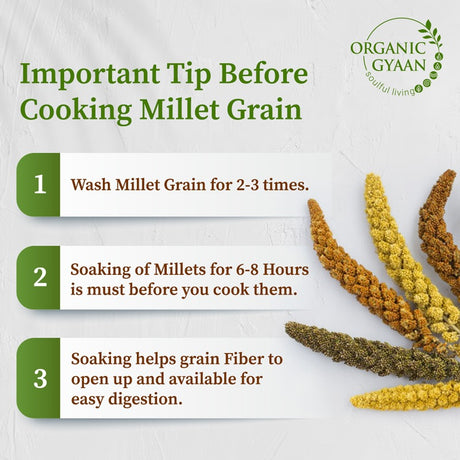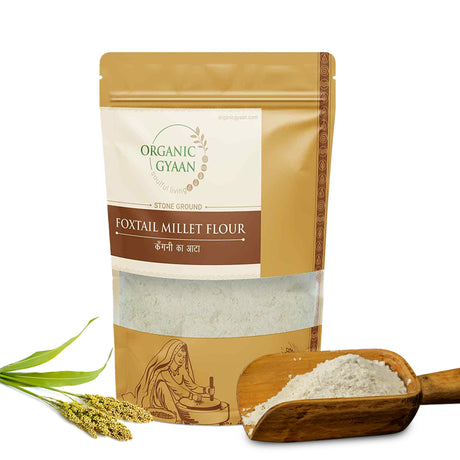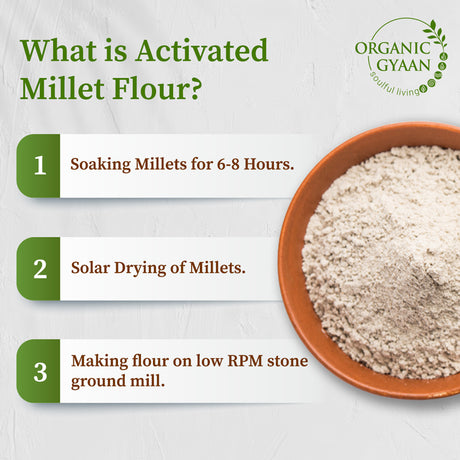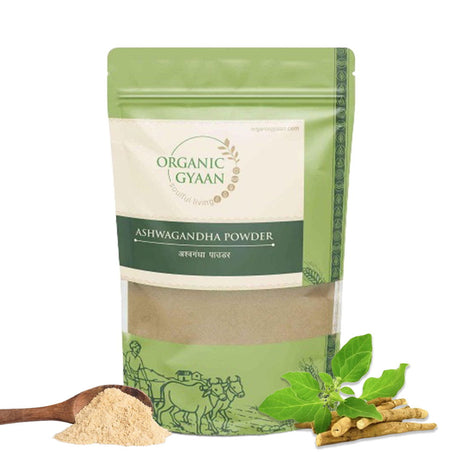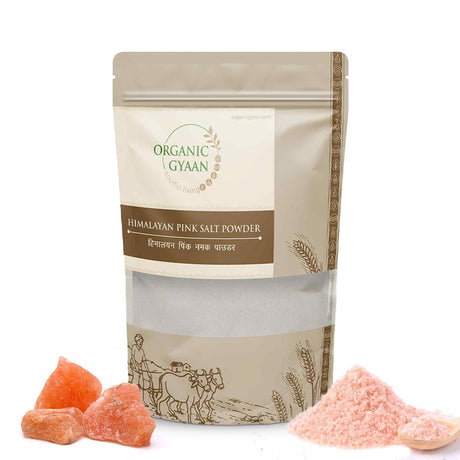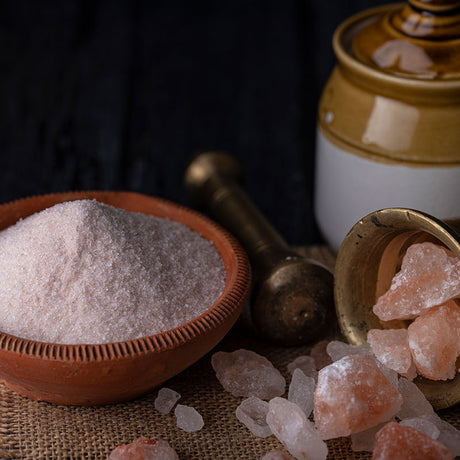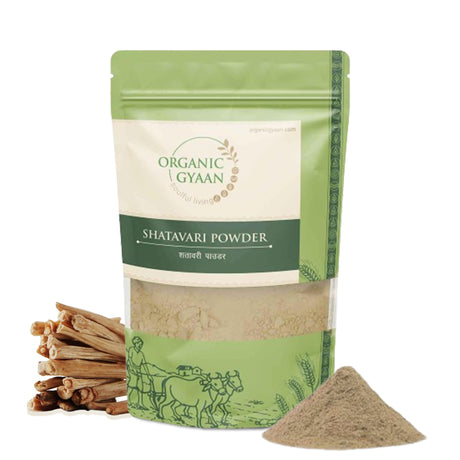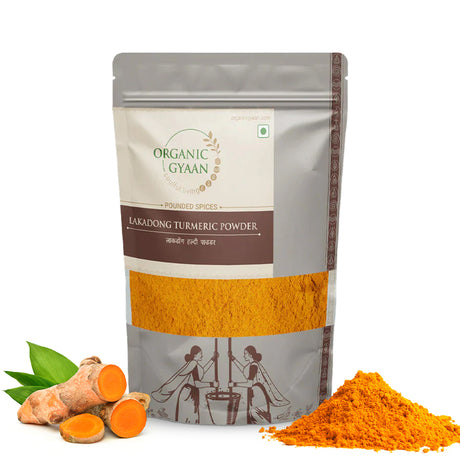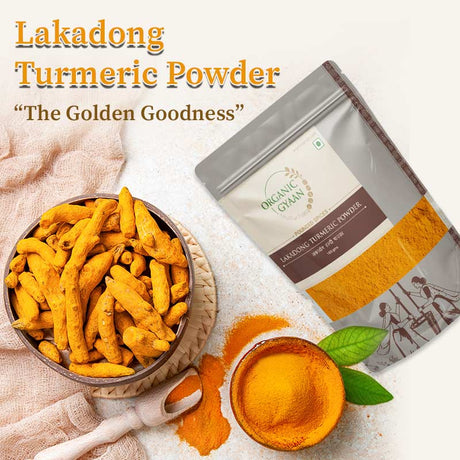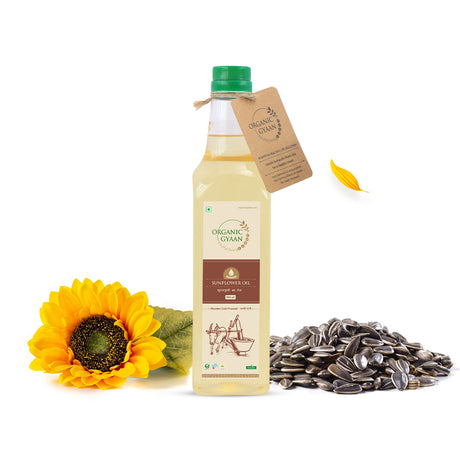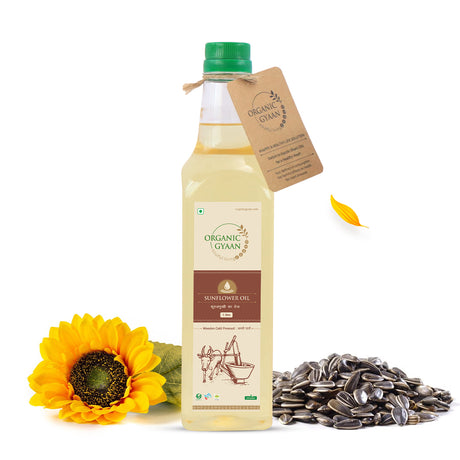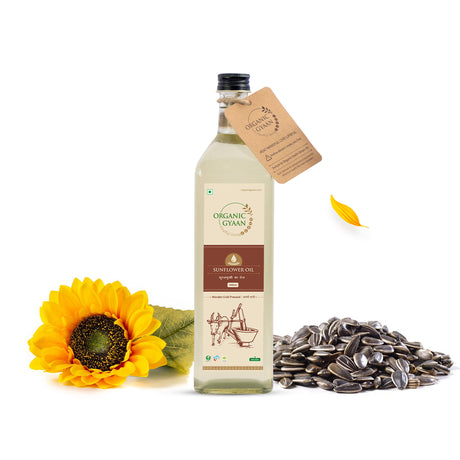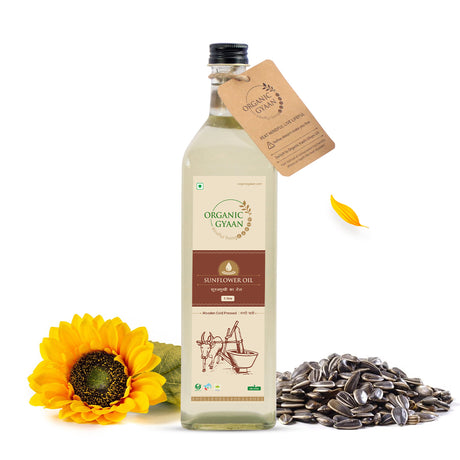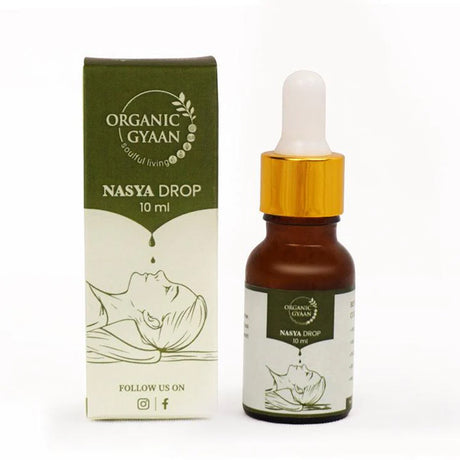In India, millets have been part of our food culture for thousands of years. But somewhere along the way, we started depending more on refined grains like polished rice and white flour. Now, as more people shift back to traditional and wholesome eating, foxtail millet is making a strong comeback- and for good reason.
This tiny grain may look simple, but it offers powerful health benefits backed by science and Ayurveda. Whether you’re trying to manage weight, control blood sugar, or just eat healthier, foxtail millet could be the change your diet needs.
Let’s explore what makes this grain so special, how it benefits your body, and simple ways to include it in your meals.
What is Foxtail Millet?
Foxtail millet is one of the oldest cultivated grains, known as Kangni in Hindi. It’s part of the Siridhanya millets family- a group of five positive millets that are deeply rooted in Indian food traditions and Ayurvedic healing.
Unlike modern processed grains, foxtail millet is usually unpolished. This means it keeps its bran layer and all the nutrients that come with it. It's a great source of natural fiber, plant-based protein, and essential minerals. Plus, it’s naturally gluten-free, making it ideal for people with gluten intolerance or celiac disease.
Nutritional Value of Foxtail Millet
Foxtail millet is packed with nutrients that support overall health. Here's a breakdown of its nutritional value per 100 grams (uncooked):
Foxtail Millet Nutritional Value (Per 100g Uncooked)
| Nutrient | Amount |
|---|---|
| Calories | 331 kcal |
| Protein | 12.3 g |
| Carbohydrates | 60.9 g |
| Dietary Fiber | 6.7 g |
| Fat | 4.3 g |
| Iron | 2.8 mg |
| Magnesium | 81 mg |
| Calcium | 31 mg |
| Phosphorus | 290 mg |
| Thiamine (Vitamin B1) | 0.59 mg |
| Niacin (Vitamin B3) | 3.2 mg |
| Folate | 25 mcg |
This makes foxtail millet one of the most balanced and nutrient-dense grains available.
Top Health Benefits of Foxtail Millet
Here are the key foxtail millet benefits that make it a smart choice for your daily diet:
1. Helps Manage Blood Sugar Levels
Foxtail millet has a low glycemic index, meaning it releases sugar slowly into the bloodstream. This helps keep blood sugar levels stable and prevents energy crashes.
For people with type 2 diabetes or insulin resistance, replacing white rice or refined carbs with foxtail millet can help improve sugar control. It’s also gentle on digestion, which is important for people managing metabolic issues.
2. Aids in Weight Loss
The high fiber and protein content in foxtail millet makes it very filling. This helps reduce hunger and avoid overeating. You feel full for longer, which naturally supports weight management.
If you're trying to lose weight, including foxtail millet in one or two meals a day can make a noticeable difference without making you feel deprived.
3. Supports Heart Health
Foxtail millet is rich in magnesium and antioxidants, which are known to protect heart health. Magnesium helps regulate blood pressure, while antioxidants reduce inflammation in the body.
It also helps in lowering LDL (bad cholesterol) and improving HDL (good cholesterol), both of which are important for a healthy heart.
4. Improves Digestion
One of the most immediate benefits people notice after eating foxtail millet is better digestion. Its natural fiber content helps regulate bowel movements and prevents constipation.
It’s also considered a prebiotic grain, which means it supports the growth of healthy bacteria in your gut.
5. Strengthens Bones and Improves Immunity
Foxtail millet contains calcium, phosphorus, and iron, which are all important for strong bones, teeth, and better immunity.
It’s a great grain for growing children, pregnant women, and older adults who often need extra nourishment for bone and blood health.
6. Gluten-Free and Easy to Digest
For anyone sensitive to gluten or trying to avoid it, foxtail millet is a safe and nourishing alternative. It’s naturally gluten-free and doesn’t cause bloating or discomfort like some other grains might.
How to Eat Foxtail Millet Daily
Adding foxtail millet to your routine is easier than you might think. You can cook it just like rice or use it in various Indian dishes. Here are some simple ideas:
- Upma – Cook with vegetables and spices for a healthy breakfast.
- Khichdi – Combine with moong dal and vegetables for a light lunch.
- Pulao – Use foxtail millet instead of rice for your favorite pulao recipe.
- Dosa or Idli – Mix with urad dal for a fermented, gut-friendly meal.
- Roti or Paratha – Blend foxtail millet flour with wheat or other stone-ground flours.
- Kheer – Prepare a sweet dish using milk, cardamom, and jaggery or natural honey.
Natural Ways to Use Foxtail Millet for Better Health
In Ayurveda and traditional Indian kitchens, millet is often paired with herbs and ingredients to enhance its benefits. Here are a few natural combinations:
- For Digestion: Cook foxtail millet with a spoon of A2 Gir Cow Ghee and a pinch of Triphala powder.
- For Energy: Add Ashwagandha powder to millet ladoos for strength and stamina.
- For Iron Boost: Eat foxtail millet roti with organic jaggery and sesame chutney.
- For Detox: Eat foxtail millet khichdi with ginger and turmeric once a week.
Is Foxtail Millet Safe for Everyone?
For most people, yes. But there are a few exceptions:
- People with hypothyroidism should limit millet intake as it may interfere with iodine absorption.
- Those prone to kidney stones should consult a doctor before including it regularly due to its oxalate content.
- Always soak foxtail millet for 6–8 hours before cooking. This reduces anti-nutrients and makes it easier to digest.
Final Thoughts
Foxtail millet is more than just a traditional grain. It’s a nutrient-rich, gluten-free, and versatile food that supports better digestion, heart health, weight management, and blood sugar control.
It’s easy to cook, easy to digest, and fits beautifully into Indian meals- from dosas to khichdi, from kheer to laddoos.
Adding foxtail millet to your diet is a simple change, but one that can have a big impact on your health.

